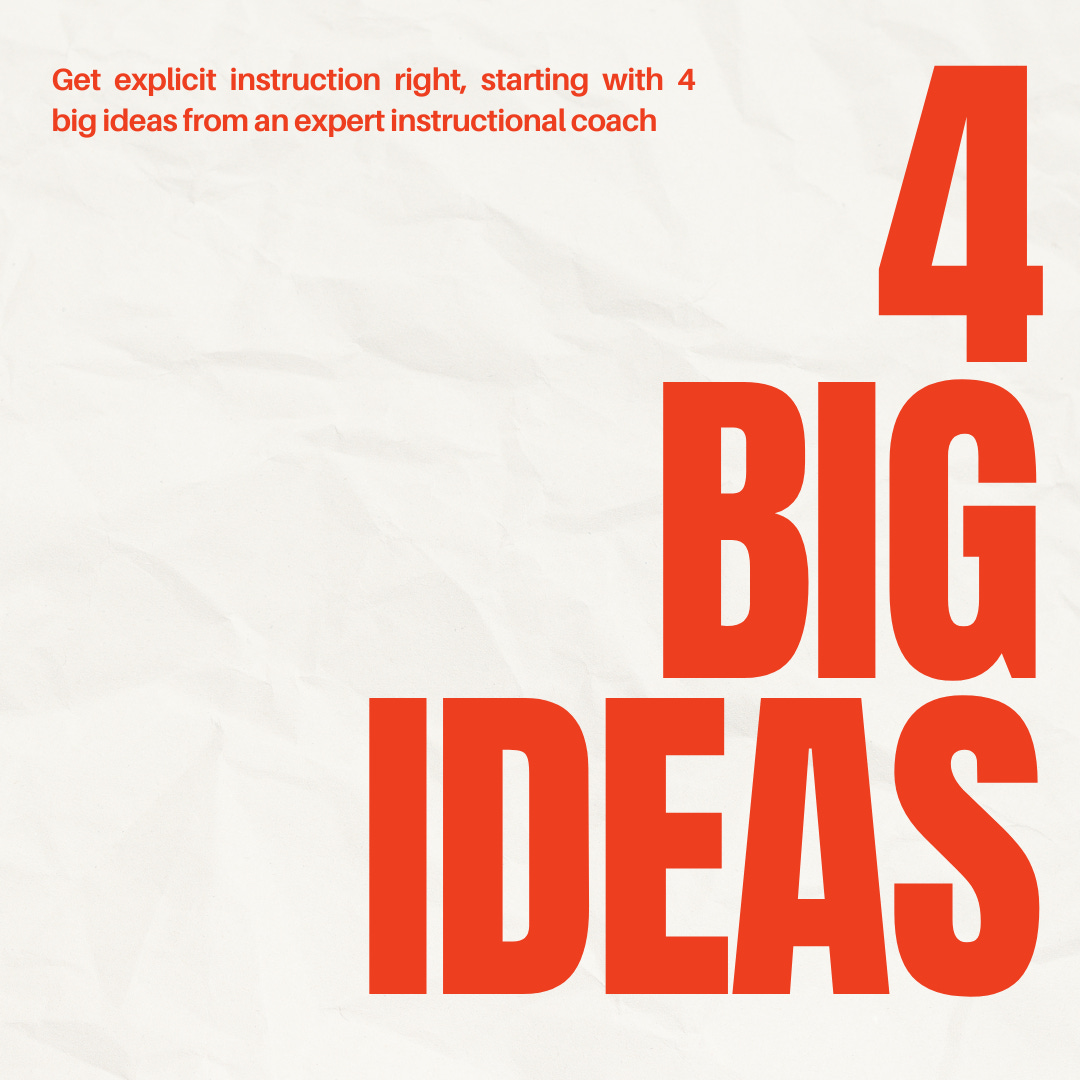4 ways to do explicit instruction right
What does an explicit instruction lesson look like in real life?
"You’re doing a public service I want to support. I’m a cognitive scientist who does research in education.” –paid subscriber Carter
Got a tip or a story you want me to look into? Get in touch: holly@hollykorbey.com
Happy Friday, Bell Ringers. This week I invited Slow Boring’s Matt Yglesias to learn more about the science of learning, due to his slam dunk post on why college humanities education should be harder and more like STEM (my argument to him: k-12 ELA has got to be better if that’s what we want to do); my story “The Practice Problem,” in Education Next came out, with deep reporting on the overflowing number of digital math practice platforms and the complicated reasons why hardly any students are using them; and The Bell Ringer community showed up in this week’s Open Thread with such thoughtful answers and critiques to my questions about whether their school is using HQIM (and we get into what that even means, exactly).
Related: I somehow missed this great story at APM reports (home of Sold a Story) about the success of early reading program Success for All, which has never been reviewed by EdReports and is declining in popularity in schools, and all the reasons why (also complicated) districts drop it even when it’s helping students learn to read.
And on top of all that, my youngest started high school and my middle son is packing the car (somewhat haphazardly) for college. I’m guessing it’s a busy time for you, too.
There’s lots coming up—more Tools for Practice, important reporting on math instruction and teacher training. Thanks to every single reader supporting this reporting, these tools and resources, so I can keep doing more of it. Consider becoming a paying subscriber:
Today’s letter is about the ins and outs of explicit instruction—the how instead of the why. I recently talked to instructional coach and consultant Gene Tavernetti about it, and he gave me some insight into the practice that gave me lots to chew on. Full disclosure, The Bell Ringer is a sponsor of his podcast, “Better Teaching: Only Stuff that Works.”
4 Big Ideas for explicit instruction
Schools shouldn’t tell teachers to just “do” explicit instruction, coach and consultant Gene Tavernetti says. They need to know how.
Explicit instruction is one of the core ideas upholding the science of learning, backed by significant evidence. Defined by researcher Barak Rosenshine as “a systematic method of teaching with emphasis on proceeding in small steps, checking for understanding, and achieving active and successful participation by all students,” experimental research has linked explicit instruction to stronger student performance. When instruction is unambiguous, highly structured, and systematic—especially for novice learners—it keeps students from overloading their working memories with too much new information, allowing them to build understanding piece by piece.
Enthusiasm for explicit instruction seems to come and go in classrooms as part of a routine pendulum swing in educational methods, and now, maybe due to the science of reading movement and the high-quality instructional materials (HQIM) movement—both emphasize explicit instruction as scientific—it’s back.
But what does explicit instruction actually look like on the ground? Often it looks like a stereotype, said instructional coach and consultant Gene Tavernetti, author of Teach FAST: Focused, Adaptable, Structured Teaching.
In more than two decades of working with teachers, Tavernetti found that teachers’ negative beliefs about explicit instruction—too boring, too much teacher talking, too much spoon-feeding students—was often based on reality.


